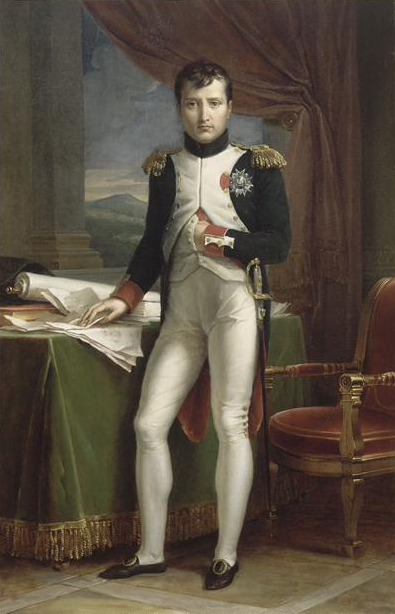Captivating Respiration: the 'Breathing Napoleon'
I’ve always felt uncomfortable around waxworks and dummies. As a child, I dreaded those occasions when our weekend museum visit would take us to Cleckheaton’s Red House Museum, the drawing room of which was set out so that the visitor had to walk down a central aisle surrounded on all sides by reclining dummies in period costume. They seemed poised to stand up at any moment, ready to dismiss the interlopers trooping through their house, and I always walked quickly past them, avoiding the eyes that I was sure would be trained upon me.
In retrospect, it could have been a much more troubling experience. As I was researching something on the British Newspaper Archive this week, I came across the ‘Breathing Napoleon’ – a travelling exhibit of the 1830s hailing from across the Channel. This effigy of the French leader reclined on a couch dressed in his uniform, his sword by his side; the flesh, when pressed, was said to ‘yield as living flesh would’ and the limbs could be moved into any position desired. Most strikingly, the figure’s chest moved in imitation of the act of respiration.
An advert for the Breathing Napoleon's appearance at Dublin’s Royal Arcade described it as a ‘splendid Work of Art’, ‘produc[ing] a striking imitation of human nature, in its Form, Color, and Texture, animated with the act of Respiration, Flexibility of the Limbs, and Elasticity of Flesh, as to induce a belief that this pleasing and really wonderful Figure is a living subject, ready to get up and speak.’ For a shilling (half price for children), one could watch ‘the chest heave … and [observe] the continual, gentle, but regular undulation consequent upon breathing’. The Waterford Chronicle noted that it was ‘difficult at first sight to get rid of the idea that you are actually looking upon a living being’, but the Kentish Chronicle was less convinced: ‘The attitude in which the artist has placed this figure is not judiciously selected, it is too stiff, too like death.’
It’s striking that the Breathing Napoleon was described as both a work of art (as above) and as an anatomical exhibit. Indeed, The Spectator related that the primary purpose of the figure was to showcase a new material imitating human flesh (variously referred to as ‘Sarcomus’ or ‘Sarkomos’) from which the model was made. These two functions were not mutually exclusive, however; such exhibits were capable of being enjoyed as educational objects as well as novelties. For an extra shilling, one could make ‘a closer examination of the body’, an opportunity that The Spectator particularly recommended to medical visitors who may like to assess the accuracy of the model.
http://www.youtube.com/watch?v=S0RnT4JBuEI
Breathing automata were not a new contrivance – the Jaquet-Droz musician (above) is a famous example – but the Breathing Napoleon particularly captured the imagination as a kind of physical encapsulation of revolutionary spirit, as well as a demonstration of technical or artistic prowess (though it would be interesting to know more about differing responses to the model in Britain and in France). In 2013, a Moscow exhibit of a ‘Breathing Lenin’ attracted attention (you can see a video of it in action here). Apart from its rather unsettling, uncanny nature – Lenin is posed as he is in his Red Square Mausoleum, making the act of respiration even more incongruous than that of the reclining Napoleon – the ‘breathing’ of the figure seems to open up a rich interpretative space. Slight as the movement may be, imbuing a model of Napoleon or Lenin with the act of respiration may - albeit rather unsubtly - carry with it much more than an instructive or entertaining message. This signifying power of respiration – and the uncanniness of the not alive and yet breathing body – is just one of the things that I’ll be investigating in more detail soon, as I start work on my main project within Diseases of Modern Life on air technologies and air therapies in the nineteenth century.




